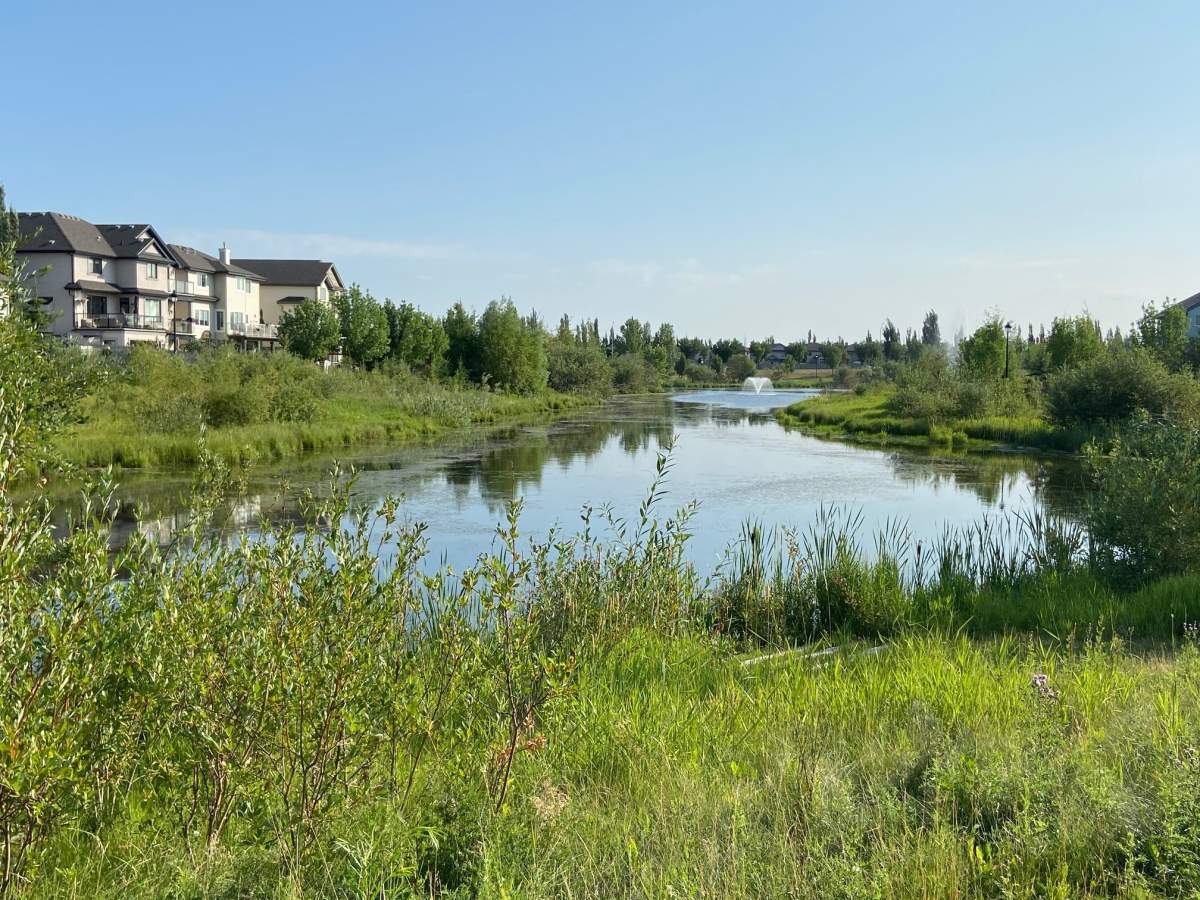This year Edmonton plans to naturalize 150 hectares of green space around 148 stormwater ponds.

The process starts simply, explained parks and roadways general supervisor Nicole Fraser.
“Stage 1: where we let the grass grow and we do weed control,” she said, pointing to an area in Doug Kelly Park with taller grass, some clover and knee-high willow trees.
The stormwater pond there was naturalized starting in 2005, but since then, more manicured green space has been allowed to revert to its natural state.
In another section of the park that was left to Mother Nature five years ago, taller grass, shrubs and yellow wildflowers are thriving as birds are heard singing nearby.
“We can plant trees and shrubs and sometimes even wildflowers,” Fraser said.
Through the Root for Trees program, the city has volunteers in the community help with the naturalization process.
In the area where the practice started 15 years ago, mature trees and shrubs are visible along the water’s edge.
READ MORE: Let it grow: City encouraging naturalization in some of Edmonton’s green spaces
Catherine Falk, one of the city’s naturalization landscape technicians, says this increases biodiversity, creates habitats for amphibians, insects and birds.
She says manual weeding helps eliminate noxious plants like thistle and creeping bellflower.

All the vegetation also helps the stormwater ponds retain moisture when there’s a lot of rain.
Plus, there’s benefits for families too, with the plants providing shade and acting as a windbreak, in addition to a natural barricade.

Get daily National news
“It actually works as a bit of a safety buffer, soft buffer, rather than fencing it, so people can’t access the site.”
Falk says there’s more than 6,300 hectares of parkland in the city, and that only about a sixth is naturalized, including this year’s additions.
Despite the environmental benefits, and some long-term cost savings from reduced mowing, the practice isn’t always warmly received by residents.

“It is a large change and a lot of people find that it may look messy or unkempt and may even be fearful of what might be in the area,” Falk explained.
But she said over time, people come to appreciate the change, as the landscape starts to look more like the river valley.
The city is hopeful education will help Edmontonians see the value of naturalization.
In addition to stormwater ponds, other green spaces are also being converted back to their wild state.
Falk gave examples: “A slope that’s too steep to mow — to avoid rollover of the equipment, or high-speed roadways, such as 70 km/h or faster.”
Some have expressed concerns about losing valuable field space, but Falk said that’s not what the city is talking about.
“We’re never going to naturalize around those soccer fields.”
She said spaces being actively used for recreation and programming will be maintained but underused backs of parks may also be naturalized.
It’s also easier to plan with this in mind for new parks and developments, she explained.
“We’re seeing naturalization integrated into the design right from the start. The city, working together with the development industry, is realizing we are moving towards a more natural state.”









Comments